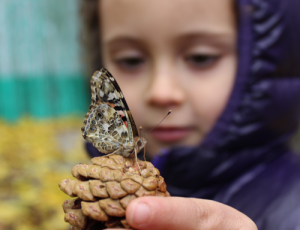
Shortly after the snow left us for the final time this year, some Kindergarteners and I were waiting together for afternoon pick-up. It was a Friday, we’d been working and playing hard all week, and the mood was muted – until someone spotted something wriggling in the dirt nearby. Instantly, the group was abuzz! Leaves were brushed aside, stones were overturned, and hands were digging in the dirt. “It’s a bunch of bugs working together, one child exclaimed.
Intense scientific debate ensued. The bugs had wings. Could they fly? Were they safe to touch? They were red and red means poisonous, right? Where had they come from? And what exactly were they doing in the dirt next to our playground? I was amazed at how simply looking down at the ground led to a world of exploration and inquiry. I began to think about how I could help these children learn about the role these insects play in our environment and their influence on the world.
In keeping with their variety, insects play a vital role in virtually every terrestrial ecosystem. Roughly three-quarters of the world’s flowering plants depend on insects for pollination. Insects are also crucial seed dispersers ... And they’re key decomposers. Legions of other creatures, meanwhile, depend on insects for food. ... Collectively, insects transfer more energy from plants to animals than any other group. They are the solder that holds food chains together.
We’ve come up with three lenses to launch into an exploration of insects:
The insects beneath our feet | The insects above us | The global influence of insects
Primary Lesson Ideas
1. The Insects Beneath Our Feet
Primary students can explore insects that live on and under the ground and their connections to other living things. Topics for inquiry include insect life cycles, insect habitats and how they contribute to those habitats, and the similarities between insects and other living things.
Ontario Curriculum Connections
Grade 1 Expectations B1.1 & B2.6
Grade 2 Expectations B1.2 & B2.3
Grade 3 Expectations B2.8 & E2.1
Mini Beasts: Young learners often need the least convincing to dive into the world of insects – or “mini beasts” as Dr. Eric Jackman Institute of Child Study lab school teacher Carol Stephenson calls them. Neighbourhood walks can uncover numerous new friends that can be brought back to the classroom for observation. Give students opportunities to share what they already know and follow the avenues for inquiry that open up.
Terrarium Guide: When you bring your mini beasts back to the classroom, use a guide to help design their new home!
Observe a Habitat: Using household items, students can build small experiments to determine insects’ preferred habitat features. Woodlice are easy to find outside (try under stones or rotting logs!) and have very specific habitat preferences. Light or dark? Dry or damp? Get creative and work with your students to find ways to test questions they wonder about too!
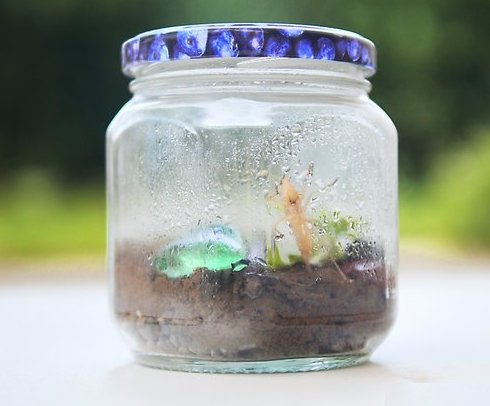
Story Ideas
When Roberto tells his fellow termites that he wants to be an architect, they laugh at him. But Roberto won’t give up, moving to the big city to pursue his dream. A cute introduction to different insects, and the idea that every creature needs a home. Prompt students to think about where they see insects, and if they think insects have homes like people do. Where do insects go at night?
From Scottish-Cherokee author Elly-Kree George, this book follows Willie the Worm as he introduces his insect friends and all the gifts they have to share. For example, butterflies help flowers reproduce and ladybugs eat insect pests.
Available at the Toronto Public Library
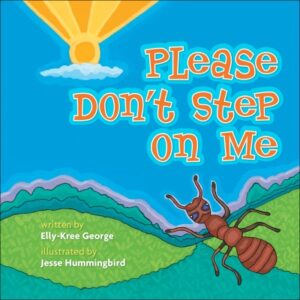
A playful, vibrantly illustrated romp through the world of beetles. The sparse but vivid text may not provide many answers, but it will provoke student questions as they are introduced to the diversity of beetles and their different appearances, behaviours, and habitats.
2. The Insects Above Us
Widen the scope of an inquiry to include the broader local environment. Butterflies, with their origins as caterpillars, are a particularly vibrant example of the interconnection between species and habitats. Provocations might include how changes in insect behaviour over a lifespan influence and sustain a habitat (caterpillars consume plants, but as butterflies they help to pollinate them). Explore connections between insects, soil, and plants.
Ontario Curriculum Connections
Grade 1 Expectation 2.6
Grade 2 Expectations B2.1 & 2.4
Grade 3 Expectations B1.1 & E1.1
Plant a Butterfly Garden: A beautiful way to simultaneously cap off and extend an inquiry, students get a chance to put their learning to work as they plant and tend a garden that supports butterflies and their contributions as pollinators.
Go on a Pollinator Walk: Venturing on a walk beyond the school yard gives students an opportunity to take note of the many insects in a neighbourhood. Spark questions about their roles/relationships within the ecosystem.
Story Ideas
From Cree author, playwright, and musician Tomson Highway comes this meditative tale of two brothers following their imaginations while camping alongside a northern Manitoba lake. They find a plethora of ways to play in and with the natural world, closely observing the animals, naming the ants, and, yes, carefully turning dragonflies into kites!
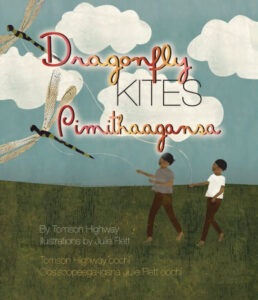
A quiet cricket explores the world around him, meeting a variety of insect friends and seeing how they live while trying to find his voice. A gentle introduction into just how many insects share a given habitat.
3. Insects and Their Influence on the World
Explore the ways insects support all life on Earth – and the implications of that reality. Areas for exploration include the impact of human activity on insects (including habitat loss through building/“development” and activities such as farming that impact soil), the different relationships humans have with insects (some cultures recognize and value insects as food, others do not), and the knock-on effect of losing species in a particular habitat.
Ontario Curriculum Connections
Grade 1 Expectations B1.1 & B2.5
Grade 2 Expectations B1.1 & B2.5
Grade 3 Expectations B1.2 & E1.2
How Many is a Million?: Help younger students visualize how many insects are in the world by thinking about what a million/billion/trillion looks like in different contexts. For example, ¼ cup of sugar contains approx. 1 million granules. Show students 1 million sugar granules and have them imagine if each granule was an ant, or a butterfly, or a beetle.
The “Three Sisters”: The “Three Sisters” practice of planting corn, beans, and squash together appears across Canada. Its impact on local habitats (including insects and bacteria!) is profoundly less than the impact of commercial farming. An example of regenerative agriculture, the Three Sisters form a symbiotic relationship, rather than compete for oxygen, water and soil.
Story Ideas
A bean seed falls into a crack in the ground. As it grows into a bean plant, suddenly an egg appears on one of its leaves. Students follow the journey of both the bean plant and a caterpillar as they grow and support each other throughout the seasons.
Thanks to its beautiful illustrations, and poetic rather than explicit text, this book is a delightful way to spark inquiry into bees’ lives and the habitats in which they do their important work of pollinating plants Students can consider the text and pictures, and share their wonderings about what they are seeing/hearing.
Junior Lesson Ideas
1. The insects Beneath Our Feet
Explore the many and varied food chains of which creepy-crawlies are a part of, the numerous roles that insects play in a food chain (pollination, soil creation, food for other animals, etc.), or the role of biodiversity in a healthy ecosystem.
Ontario Curriculum Connections
Grade 4 Expectations B2.1 & B2.3
Grade 6 Expectations B2.2 & B2.3
Build an Insect Home/Hotel Outside Your School: Students use recycled materials to build an insect “house” outside the school. This activity can be used as the provocation ahead of a unit on insect habitats, their contributions to their ecosystems, or the impacts of human development on their populations. Revisit this activity throughout the year as insects “move in.”
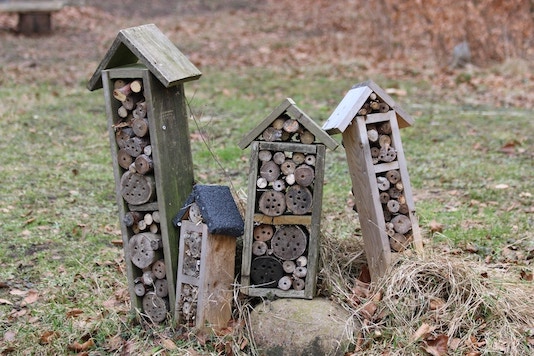
Build a Classroom Ant Farm: Students observe busy life under the surface can be with a class ant farm. Also provides an opportunity to consider the impact of insects on soil health (a similar set up can also be done with worms, although they are not insects).Some requirements and ethical considerations about ant farms are discussed in the School of Bugs blog below.
Story Ideas
Using comical illustrations and splashy “headlines”, this book shows children how ants are, in so many ways, just like us.
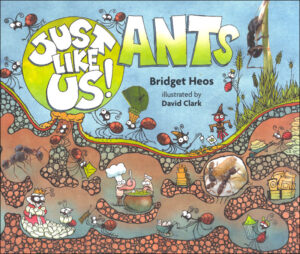
Formatted like a comic book, this text introduces the wonderous abilities of different insects and shows how they interact with other insects and animals (ie. “Favourite Foods” and “Archenemies”)
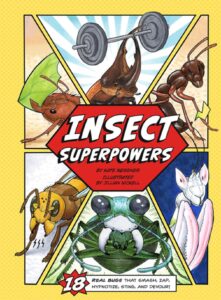
2. The Insects Above Us
The interconnections between living things in an ecosystem form a common thread in the Science curriculum. The role of insects within this theme can spark inquiry in a range of directions, including an exploration of what biodiversity is and why it matters, how the movement patterns of insects can give us a different perspective on what makes up a habitat, and how insects interact with different species in their habitats.
Ontario Curriculum Connections
Grade 4 Expectations B2.2 & B2.5
Grade 6 Expectations B2.5 & B2.6
Our Soil Food Web: Students identify and research the insects they see in their neighbourhood. Sharing their research, students work together to build a classroom visual that shows how all the living things (expand to animals!) they have identified are connected. We recommend doing this activity in conjunction with a series of neighbourhood walks, which provide a great opportunity for students to deepen their observations and build their food web over time.
How Big is My Habitat?: Students explore and compare the habitats of different animals, including insects, to deepen their understanding of how animals/plants interact in an ecosystem. Students consider their own habitats, and how their habitats are interconnected with those of others (I.e. if getting my need for food met involves food imported from other habitats, then what happens in those habitats will impact my own).
Story Ideas
As this vividly illustrated book reveals, patience is just one of the many qualities butterflies have! Readers are introduced to a rainbow of different butterflies and learn about both the insects and how they contribute to the world around them.
Invite readers of all ages to appreciate the way our languages shape our worldviews. Mi’kmaw is a verb-based language (English is noun-based) and reading through the insect names in both languages offers incredible insight into how two ways of knowing interpret the world – and insects’ place within it – differently.
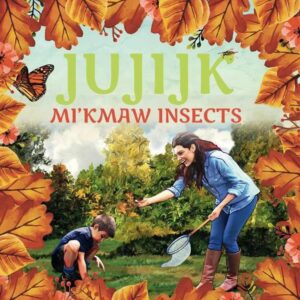
A deeper dive into the decline in insect populations, and its implications for the planet and for humanity. Also offers ideas for protecting insects, including changes to food protection, habitat protection, and even arguing for improved legal protections for rare insects.
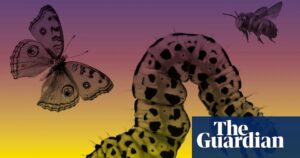
3. Insects and Their Influence on the World
With their focus on habitats and biodiversity, Junior-level Science is a perfect place to explore the crucial role insects play in the survival of all species on Earth and how human behaviour has impacted insects and their habitats An explicit emphasis on human behaviours that impact insects can support explorations into the limits of what a habitat/ecosystem can sustain, the varied effects of climate change on habitats and insects (and how those effects inter-relate), and the necessity of insects for human agriculture around the world.
Ontario Curriculum Connections
Grade 4 Expectations B1.1, B1.2 & B2.7
Grade 6 Expectations B1.1, B2.4, B2.7 & B2.8
Charting the Impact of Commercial Farming on Insects: As a major source of habitat loss and pollution (through pesticide use on crops and methane emissions from livestock), commercial farming is inextricably linked to climate change. Both commercial farming practices and climate change itself impact insect populations around the world, with consequences up and down the food chain. Students can research which countries use the most pesticides, and compare that data with research about deforestation rates and loss of biodiversity (research specific to insect population decline is still minimal, so biodiversity may be used as a proxy given the vital importance of insects in the food chain). What relationship can students see between pesticide use, deforestation, and loss of biodiversity? What are the implications? What alternatives can they find, and how might they use their new knowledges to call for change?
Story Ideas
Insects from around the world are ready for their close-up in this book of extraordinary photographs and fascinating fun facts. While the book is a visually inspiring feast in its own right, we especially appreciated the companion website, where you can zoom in on the images and see even more details of insects’ physical features.
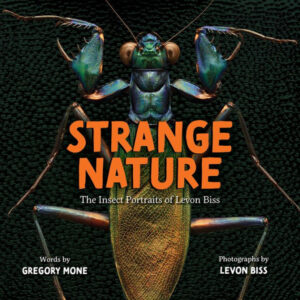
What sets this article apart is its fantastic graphics; particularly noteworthy is a series of visuals that illustrate the staggering percentage of the animal kingdom that insects take up (did you know that beetles make up 24% of ALL animal species?). Students exploring classification of animals will also appreciate a visual that breaks down the phyla, subphyla, classes, and orders of the animal kingdom.
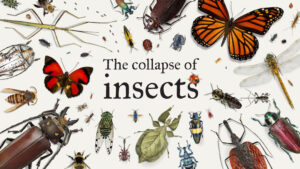
A deeper dive into the decline in insect populations, and its implications for the planet and for humanity. Also offers ideas for protecting insects, including changes to food protection, habitat protection, and even (talk about a conversation-starter!) arguing for improved legal protections for rare insects.

Author

Kathryn Sieber
Student Teacher, Master of Teaching Education Program (OISE/U of T)

